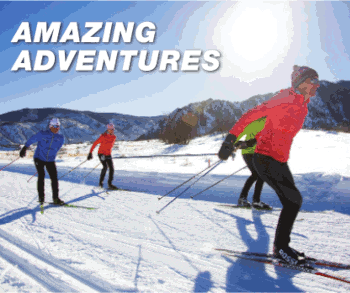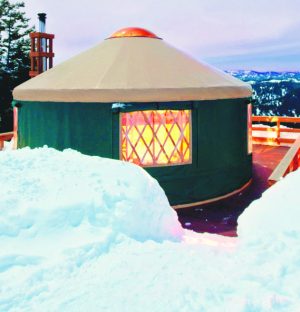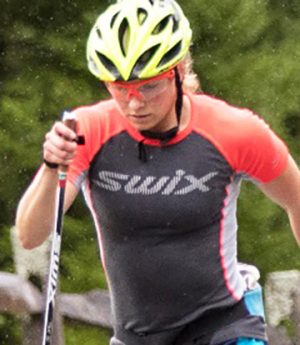January 25, 2009 (Salt Lake City, Utah) – “Skiing-out-the-back-door” is a growing category in the cross-country ski market. We’re talking skis that turn and skis that tour… and we’re talking about back doors that lead to snowier and hillier terrain. Karhu reports growth in this category and in fact two major northwest retailers had Karhu Guides out-selling any other metal edged skis including full blown tele and AT skis. This niche includes waxless, metal edge skis that are lightweight, fairly wide and easy to turn.
Rossignol is in the game as well helping these back yard adventurers with a new back country boots. The Rossi BC X9 that fits a NNN BC binding now uses a cuff and ratchet-buckle system like their superb X-ium skate boots. Three pinners will be pleased with the new BC X11. This plastic cuffed 75 mm. boot is more like an old school leather boot but with modern materials. It’s perfect for turning and touring the Rossignol BC 90 ski, the Karhu 10th Mountain, Fischer Outbound or the Atomic Rainier. In many ways this is a return to the era when Nordic skiing first became popular on this continent – but with tons of downhill control.
Alpina has also recognized this and is now importing two leather three-pin boots to fit this category. They’re well-made in Italy and should please a lot of light-duty back country skiers. These boots couple with Alpina’s new Red Bird, a full metal edged ski that is narrow enough for the track and still good for off track touring. Alpina also has a few new 75 mm boots with a skate boot-like plastic cuff that’s beefy enough to power the Alpina Lite Terrain ski – a waxless, metal edge baby that’s wide enough to handle tougher conditions.
Zero is Not Absolute
Zero degrees Centigrade (32 degrees Farenheit) and snowing is a waxing nightmare that all classic ski racers face. To help solve the zero degree problem almost all of the major ski manufactures have produced, or are producing, a special ski for these conditions. A unique base material under foot is used, some times a rubber/cork material, and sometimes a specialized P-tex material. In both cases the base needs to be roughed up like “hairies” of old. Many of these skis work in the dreaded zero degree and snowing conditions zone, but in nothing else.
Now Fischer and Madshus are expanding the range of these very specialized skies. Fischer is changing it’s cork/rubber compound while Madshus is experimenting with different ways to abrade the base and is testing this process by pre-abrading the skis while still at the factory. Swix has even developed a product to put on the base of these skis appropriately named Zero De-icer. Last season Swix labeled this product zero degrees only. Now it’s labeled it minus one to plus one, and beginning to expand the range.
Zero skis have been very expensive top-of-the-line race skis until now. Madshus is making the base available on their Birkebeiner – a delightful in-track classic ski made in Norway that sells for around $400 US. We got a chance to test the Birkebeiner at the OR on-snow demo at Snow Basin, Utah on old, cold snow that was nowhere near zero degrees – it worked! The ski felt smooth and glided just like a well-waxed classic ski. Grip was also good on moderate terrain but I couldn’t climb the steepest hills.
Still pretty good performance for a ski way out of it’s range.
Fischer’s Peter Ashley and Madshus’ Peter Hale both feel zero is no longer absolute and that the range is growing. After our test we agree. Stay tuned for further advancements in this direction especially with the warm maritime snow conditions of the 2010 Olympic Games in Callahan Valley, British Columbia.
Top News Stories
OR Show 2009 Wrap Up – Out the Back Door
Zero is Not Absolute
by Don PortmanLeave a Reply
You must be logged in to post a comment.






![National camp action [P]...](https://skitrax.com/wp-content/uploads/2019/08/Duluth-4-2019-08-08-at-10.46.51-AM-300x246.png)
![Matt Liebsch on the CXC Elite Team [P] CXC...](https://skitrax.com/wp-content/uploads/2019/08/Matt-Liebsch-CXC.2-525x700.4-300x267.jpg)
![Dan LaBlanc [P]...](https://skitrax.com/wp-content/uploads/2019/08/Dan-LaBlanc-img_1855.3.jpg)
